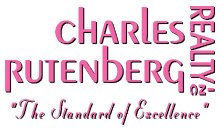I sent out a special letter to my clients yesterday, about rental properties as an investment. I wanted to share the simplicity of the calculation that tells you if a property can cash-flow for you or not. It’s not a secret – investors all use this simple formula – but it always surprises me how many people don’t know it.
It’s a brand new year and most of us are setting goals we would like to accomplish in the year ahead. Top of the list is to increase one’s wealth or plans for retirement. If you have ever been hesitant to add rental property to your portfolio, here’s a simple approach to seeing the value of this type of investment.
Is rental property a good investment?
Here’s a true statement that may sound complicated enough to be an obstacle standing in the way of your buying and receiving income from a rental property:
Appreciation, tax advantages, leverages, cash flow and equity build-up contribute to the rate of return on rental real estate.
This may sound daunting, but don’t let this stop you from buying rentals. Let’s break it down and make it as simple as it really is. Here’s how experienced investors look at it.
- Appreciation. Not a factor in deciding whether to buy a property.
- Tax advantage. Not a factor in deciding whether to buy a property.
- Leverages. Not a factor in deciding whether to buy a property.
- Cash Flow. One of the only two factors an investor looks at.
- Equity build-up. The only other factor an investor looks at.
This is the simple equation that all investors use to determine if a property is worth buying as a rental. All you need is to look at cash flow and equity build-up. And the best news is that these two factors are easy to calculate and their outcomes are both reliable and predictable.
Let’s Make the Equation
1. Rate of Return
The term used to describe the rate of return on a rental property is “Cash on Cash”. Get used to this lovely sounding phrase – after a time it will sound like a cash register to you.
A cash-on-cash rate of return is determined by dividing the cash flow before taxes by the cash invested in the property. It considers all of the “real world” income and expenses related to the property.
We abbreviate “cash flow before taxes” to CFBT. And then we make our equation:
Cash on Cash = CFBT / (Down payment + acquisition cost)
When you examine this equation you see that it makes perfect sense, but many people are confused about the real cost of buying the property. You can’t ignore the down payment, and you can’t ignore the costs of a mortgage . To make a correct decision, you MUST treat the cost of buying a rental property as if you were paying cash – what is the total dollar amount that ultimately comes out of your pocket and portfolio?
- Equity Build-Up
The equity build-up occurs from the normal process of amortization. As you pay down the mortgage, the interest portion shrinks over time and an increasingly larger portion of each payment is applied to reduce the principal loan amount. As you pay down the principal, your equity builds up.
When you look at a potential rental property, you want to establish the Cash on Cash and the Equity Build-Up, and add them together. This gives your net yield.
EXAMPLE
Now we are going to take these two factors of cash-on-cash and equity build-up and put them together in the financials of a property.
Full Purchase Cost
Purchase Price ………………………………………………………………… $125,000
Acquisition Costs ……………………………………………………………… $3,500
Down Payment ……………………………………………………………….. $25,000
Financing
80% Mortgage loan @ 5% for 30 yrs…………………………………. $100,000
Payment …………………………………………………………………………. $567.79
Real World Cash Flow
Gross Scheduled Income (Monthly Rent $1,250) ………………… $15,000
Less Vacancy (at 5%) ………………………………………………………. $750.00
Gross Operating Income …………………………………………………… $14,250
Less Operating Expenses:
(Property Taxes @ $3,000)
(Insurance @ $1,200)
(Repairs @ $1,200)
Total Operating Expenses ……………………………………………….. $5,400.00
Net Operating Income……………………………………………………… $8,850.00
Less Annual Debt Service (payments) ………………………………. $6,814.00
Cash Flow Before Taxes (CFBT) ……………………………………… $2,037.00
Remember: Cash on Cash = CFBT/(Down payment + Acquisition Costs)
= $2,037.00 / $28,500 = 7.15%
So:
Cash on Cash ……………………………………………………………………. 7.15%
Equity Build-up Year 1 (from mortgage calculator) ………….. 4.73%
Total Yield ……………………………………………………….. 11.88%
Conclusion
In this hypothetical example, the combination of the Cash on Cash and the Equity Build-up is almost 12%, which is considerably higher than certificates of deposit and bonds. And the investment is nowhere near as volatile as stocks or mutual funds.
If you are a current homeowner, already familiar with your own mortgage and expenses, you should feel more comfortable with a rental than alternative investments. A conservative strategy is to purchase slightly below-average price range homes, in a predominantly owner-occupied neighborhood. Collect the rent, pay the bills and make necessary repairs.
In most of today’s markets, rents are expected to continue to rise and due to a low inventory of homes for sale, coupled with growing demand, home prices will continue to rise.
There should be value also in the other three factors that contribute to your position – appreciation, tax advantages and leverage of your collateral assets into financing. Obviously if they’re negative for any reason, this does impact your position. But even with positives for all three factors, you should always consider these ONLY as a bonus to the basic rate of return.
© 2016 Stephanie Passman



